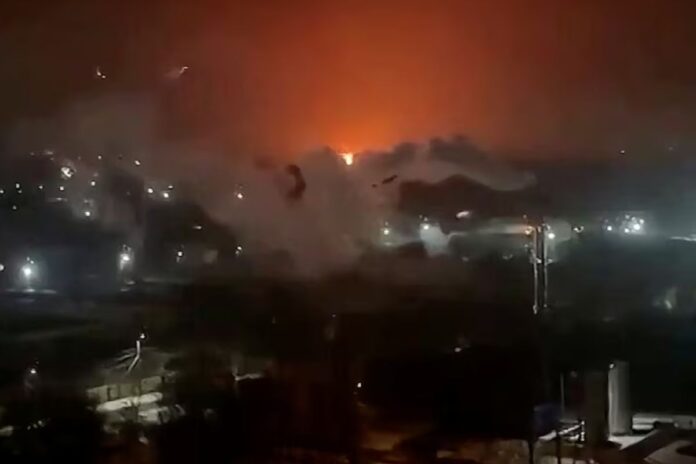In a significant escalation of hostilities, Russia announced that Ukraine launched a missile strike on the Taganrog military airfield in the Rostov region on December 11, 2024, utilising U.S.-supplied ATACMS ballistic missiles. The Russian Ministry of Defence reported that six missiles were fired, with two intercepted by a Pantsir missile defence system and the remainder neutralized through electronic warfare.
“On the morning of December 11, 2024, the Kyiv regime launched a missile strike with Western precision weapons at the Taganrog military airfield,” the ministry stated. It warned, “This attack by Western long-range weapons will not go unanswered and appropriate measures will be taken.”
This incident follows Ukraine’s recent use of U.S. ATACMS and British Storm Shadow missiles, including strikes on November 19 and 21, which targeted Russian military installations. Moscow retaliated by deploying the “Oreshnik,” or Hazel Tree, an intermediate-range hypersonic missile, marking its first known operational use in the conflict.
Russian President Vladimir Putin condemned the use of Western-supplied weaponry in attacks on Russian soil, cautioning that the war could escalate into a broader global conflict. “The Ukraine war is escalating towards a global conflict after the United States and Britain allowed Ukraine to hit Russia with their weapons,” Putin remarked following the November strikes. He further hinted at possible retaliation, emphasizing Moscow’s capability to respond robustly to perceived threats.
A U.S. official, speaking on condition of anonymity, acknowledged that Russia might conduct another hypersonic missile test in the coming days. However, Washington downplayed the strategic impact of the Oreshnik missile, asserting that it is not a “game-changer” in the ongoing conflict.
The situation underscores the increasingly precarious phase of the war, which has raged since Russia’s invasion of Ukraine in February 2022. This conflict has resulted in tens of thousands of casualties, displaced millions, and plunged relations between Moscow and the West into their deepest crisis since the Cuban Missile Crisis of 1962.
As Russian forces advance at their most rapid pace since the initial weeks of the war, global attention turns to potential resolutions. President-elect Donald Trump, set to assume office next month, has advocated for an immediate ceasefire and peace negotiations. His stance raises questions about the future of U.S. support for Ukraine, particularly given his administration’s emphasis on reducing American entanglements in foreign conflicts.
The Kremlin views the recent strikes as a provocation enabled by Western military aid, framing them as part of a larger geopolitical struggle. Moscow’s narrative paints the conflict not merely as a regional war but as a confrontation with NATO powers, a sentiment echoed in Putin’s rhetoric.
The escalation brings both risks and urgency to diplomatic efforts, as Western nations grapple with how to balance support for Ukraine while avoiding a direct confrontation with Russia. With winter intensifying and the stakes higher than ever, the world watches closely for signals of de-escalation—or further escalation—in one of the most dangerous conflicts of the 21st century.

